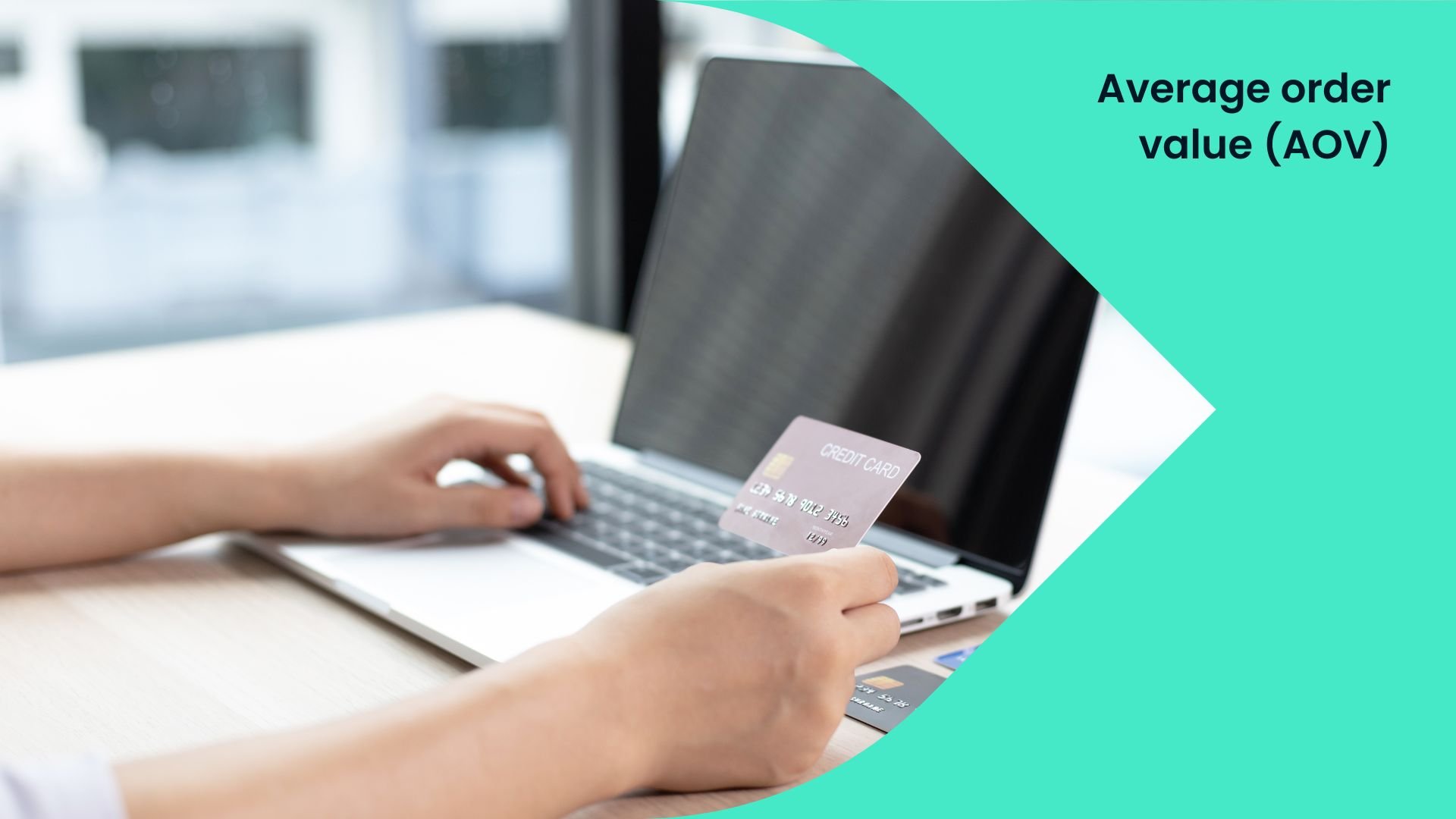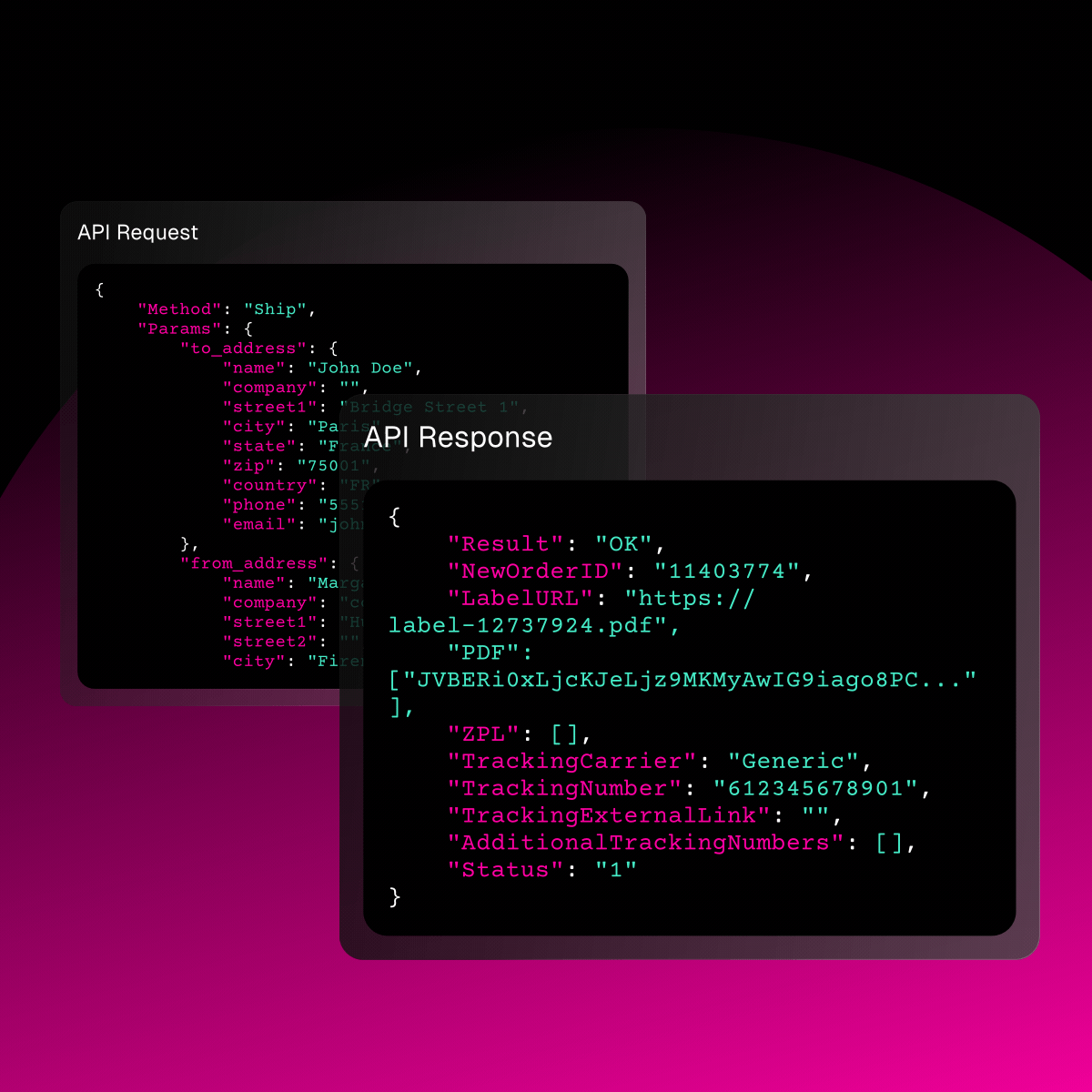Average Order Value (AOV): definition, formula and KPIs

Average Order Value isn't just an abstract number. When accurately tracked and analysed, it tells the story of your customers' relationship with your products and your brand. In fact, it can support you in crafting insight-driven strategies and in making decisions that not only increase your revenue but also trigger the growth of your e-commerce business. Let’s discover everything you need to know about Average Order Value in ecommerce.
Average Order Value definition
Average Order Value (AOV) is the average amount people spend every time they complete an order on your e-commerce website, app, or marketplace. Therefore, the concept is pretty straightforward: the more money customers spend on each order, the higher the profit for your business, especially if achieved without a proportional increase in other costs, like marketing or advertising.
Anyway, we’ll delve into this more in depth in the following paragraphs! Now, let’s focus on how to calculate AOV.
How do you calculate AOV?
The Average Order Value formula is fortunately pretty simple.
You can calculate it is as follows:
Average Order Value= Revenue / Number of orders
For example, imagine your online clothing store has 200 orders that have generated $5,000 sales in total. Your average order value in this case would be $25. This indicates that each customer is averagely spending $25 whenever they place an order.
Knowing this value can give you a benchmark to encourage customers to spend more by offering free shipping thresholds on orders above $25 or creating special product bundles.
Strategies to increase Average Order Value
Essentially, there are two tactics to increase your revenue. You can either find a way to increase the volume of orders your customers place or increase the value of each order. Often, businesses focus primarily on increasing their orders by acquiring new customers and expanding to new markets, which is obviously promising, yet expensive. The second option, namely focusing on increasing AOV, can be equally efficient but less expensive, because in this way businesses can take advantage of existing customer relationships and potentially reap greater financial benefits with less investment. Let’s look at some strategies to increase Average Order Value.
Set a threshold for Free Shipping
Offering free shipping for orders exceeding a certain amount is an effective strategy to encourage customers to spend more. To determine the optimal threshold for customers to qualify for free shipping, consider your Average Order Value. Let’s focus on the example we discussed above. If your average order value is $25, you can set the free shipping minimum slightly higher, say at $35.
Marketing experts advise to set this threshold more or less 30% above your AOV. The aim is, in fact, to make free shipping appear reachable to most people, whereas setting it too high might lead to cart abandonment. As per your profit, the threshold should be also set in a way that you account for shipping expenses without incurring losses. People are always attracted to free shipping, so finding a right balance between profit margins and expenses can be beneficial to both you and your customers.
Offer volume discounts
Another strategic approach is to offer volume discounts, for example by offering a $10 discount on orders over $50. In fact, customers typically focus on the amount of money they are saving, rather than the amount they are spending. If you are aware of the products that sell the most on your store, focus on these when offering volume discounts. Plus, make this minimum order incentive clear for customers, either at checkout or directly on your website.
Offer product bundles
To increase your Average Order Value, a smart tactic is to encourage customers to buy more by creating curated packages with a more attractive pricing compared to buying items individually. To make this strategy work, focus on offering packages with a set of products that provide a complete solution for a specific needs or experiences. For example, if you sell beauty and skincare products, you could curate a package that includes a gentle facial cleanser, a balancing toner, and a hydrating moisturiser at a set price. This approach can be further refined by tailoring each bundle of products for different skin types, thus encouraging larger purchases while simplifying the buying process for your customers. It saves them time and effort to look for each product separately and will make them perceive an order as more valuable.
Integrate upselling and cross-selling strategies
When a customer is buying a new pair of shoes on your website, suggesting complementary items like socks is definitely a strategic move. Similarly, recommending a tablet case to someone purchasing a tablet will either remind them of something useful they are forgetting or smartly capitalise on their current buying mindset. This technique, known as cross-selling, is generally very successful when integrated at checkout, in other words when customers are already predisposed to spending. In fact, this is the stage when they are more open to considering additional, related products that could add value to their initial purchase. Furthermore, they often appreciate these recommendations, perceiving them as helpful and valuable additions to their primary choice. Therefore, make sure to recommend products that are real beneficial choices rather than making random suggestions.
Upselling on the other hand, typically consists of suggesting a higher-end version of the same product the customer is already considering to buy. For example, if someone is looking at a certain tablet, upselling means suggesting a more advanced model than the one they are viewing, perhaps one with a larger screen or more advanced processor. The best moment to take advantage of this sales tactic is when customers are on your product page, because here they compare options and look at product descriptions.
Build a customer loyalty programme
Customer loyalty and Average Order Value are closely connected. In fact, the more customers trust your brand, the more they are likely to spend. This is very important in the e-commerce context, where acquiring a new customer can be up to 5 times more expensive than retaining an existing one. Therefore, focusing on your existing customer base is essential!
Frequent customers already love your brand and are willing to make larger transactions.
One example can be to offer tiered rewards to subscribers. The more customers spend, the higher should their reward be, either in the form of a cashback or in the form of points and discounts. Make sure these rewards are relevant to people, so that they perceive they are getting a great deal. Furthermore, Millennials are a large segment of the population and research shows that they greatly value loyalty programmes. Indeed, 80% are willing to subscribe to one and are highly attracted by loyalty programmes by their favourite brands. And remember, a great loyalty programme adapts to the needs and preferences of its customers. One day it can be cashbacks and the other day it can be same-day shipping! Therefore, focus on practical, meaningful rewards that acknowledge loyalty in a relevant way.
P.S. Don’t forget that the key is finding a balance between incentivizing larger purchases while maintaining a positive customer experience. Sales tactics that are too aggressive can backfire, so it’s important to keep happy customers at the forefront of your AOV strategy.
Average Order Value KPI (Key Performance Indicator)
Average Order Value (AOV) is a crucial KPI for e-commerce stores. Tracking this metric can help businesses understand their customers' purchasing habits and how effective their sales and pricing strategies are, adapting goals and strategies accordingly. It can be tracked for any period, but most businesses monitor it monthly.
Like all KPIs, Average Order Value should be combined with other key e-commerce metrics to gain a more comprehensive understanding of your business’ performance. Some of these are:
Customer lifetime value (CLV)
CLV measures the total revenue generated by a customer over the entire duration of their relationship with a business. It is an important metric to measure with AOV, as it helps gain understanding on how much it costs to acquire and retain customers. Also, a high CLV can potentially lead to a higher AOV, especially if the customer is purchasing frequently or spending more on products.
Revenue per User (RPU)
If combined with AOV, retailers can understand if orders are made by the existing customer base or by new customers, and by how much their value differs, thereby understanding each specific customer profile and how to strategize marketing efforts.
Conversion Rate
Conversion Rate is the percentage of visitors who complete a purchase on your website. A high conversion rate can potentially lead to a higher AOV if the conversion is aligned with strategies like upselling and cross-selling.
Average Order Value by industry
As you can imagine, Average Order Value is not a one-size-fits-all figure. However, to set a realistic benchmark, you need to have an idea of the standards in your niche. For a clearer picture, below you can find some insights regarding AOV across different industries.
As of September 2023, the insights present an intriguing landscape:
- In the Beauty and Personal Care industry, AOV is at $80.
- In the Food and Beverage industry AOV is at $94.
- Multi-brand retail AOV is at $84.
- Fashion, Accessories, and Apparel are experiencing an AOV of $142.
- Consumer Goods have fluctuated throughout the year, but their AOV is at $124.
- Luxury and Jewellery, after a recent decrease, are at an AOV of $149.
- Home and Furniture leads with the highest AOV, currently at $256
(Source: Dynamic Yield)
Conclusions
When you focus on increasing Average Order Value (AOV), it means that you are tapping into the potential of shoppers who are already inclined to purchase, thereby growing revenue without necessarily having to expand order volumes.
The aim is in fact to guide users who arrive at your store with clear intent to buy towards enriching their shopping experience. By concentrating on these visitors who are predisposed to spend, you face fewer obstacles than you would in the pursuit of acquiring new customers, especially in terms of money investment.
As the festive season approaches and the jingle of bells is in the air, it is a perfect opportunity to test your strategies to increase AOV for Christmas. In fact, these and other holidays during the year are days that typically see a surge in spending, making it an ideal time to boost your AOV.
To stay ahead in your marketing efforts, you can keep a close eye on the complete 2023 marketing calendar and plan your strategies accordingly. In fact, monitoring your AOV is crucial, as it will not only allow you to gain useful insights on how people interact with your products, but will also help you to elaborate smarter strategies to enhance the quality of transactions for both you and your customer base.
Passionate freelance copywriter, with a niche in ecommerce and logistics. When collaborating with ShippyPro, she loves writing about trends, marketing and communication strategies to help brands gain an edge in an ever-evolving digital landscape.






.webp)



.webp)
